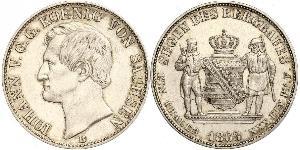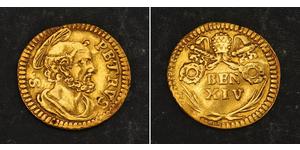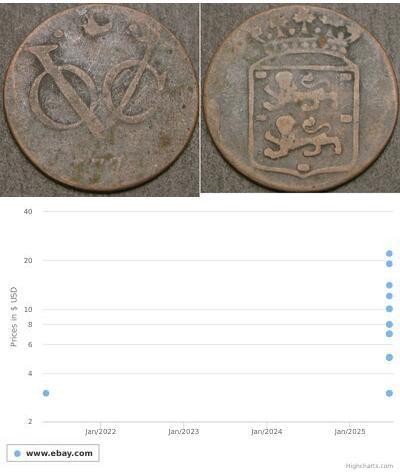2 Pfennig Kingdom of Saxony (1806 - 1918)
2
Pfennig
Issue year(s):
1854
Sachsen-Albertinische Linie. Johann 1854-1873. 2 Pfennig 1864 B. Jaeger 122, AKS 153.
5
coins in the group
(1500 X 751 pixels, file size: ~170K)
Posted by: anonymous 2019-03-24
Sachsen-Albertinische Linie. Johann 1854-1873. 2 Pfennig 1873 B. Jaeger 122, AKS 153. Fast Stempelglanz / Stempelglanz
(1500 X 746 pixels, file size: ~184K)
Posted by: anonymous 2019-03-24
Sachsen-Albertinische Linie. Johann 1854-1873. 2 Pfennig 1864 B. Jaeger 122, AKS 153. Erstabschlag. Winzige Flecken, Stempelglanz
(740 X 370 pixels, file size: ~63K)
Posted by: anonymous 2020-07-04
1866,Sachsen-Albertinische Linie. Johann 1854-1873. 2 Pfennig 1866. Jaeger 122, AKS 153. Prachtexemplar. Stempelglanz.
(740 X 370 pixels, file size: ~65K)
Posted by: anonymous 2020-07-04
1862,Sachsen-Albertinische Linie. Johann 1854-1873. 2 Pfennig 1862. Jaeger 122, AKS 153. Prachtexemplar. Stempelglanz.
(900 X 457 pixels, file size: ~115K)
Posted by: anonymous 2016-05-01
Sachsen-Albertinische Linie, Johann Cu 2 Pfennig 1864 B. Jaeger 122, AKS 153. Prachtexemplar. Stempelglanz
Articles
|
You may be interested in following coins
2025-05-24
- New coin is added to 1/2 Scudo Vatican Gold
1/2 Scudo Vatican Gold
group has 5 coins / 5 prices
⇑
ITALIA Vaticano - Stato Pontificio Benedetto XIV. 1740-1758. 1/2 Scudo romano 1741, Roma. 0.91 g. Berman 2735. Fr. 233. BB+.
2025-05-24
- Historical Coin Prices
You may be interested in ...

-500-250-Y4_ZGYbcUScAAAFpRXOZt7GM.jpg)
-300-150-4iHZGYbc5DAAAAFpD7uZt7GM.jpg)
-300-150-Y4_ZGYbcUScAAAFpRXOZt7GM.jpg)
-300-150-vOjcL1dgKdcAAAFzgiXDuRux.jpg)
-300-150-b3PcL1dgoU8AAAFzGxrDuRux.jpg)
-300-150-I3EKX9ISZqcAAAFUMqsoa2oj.jpg)














